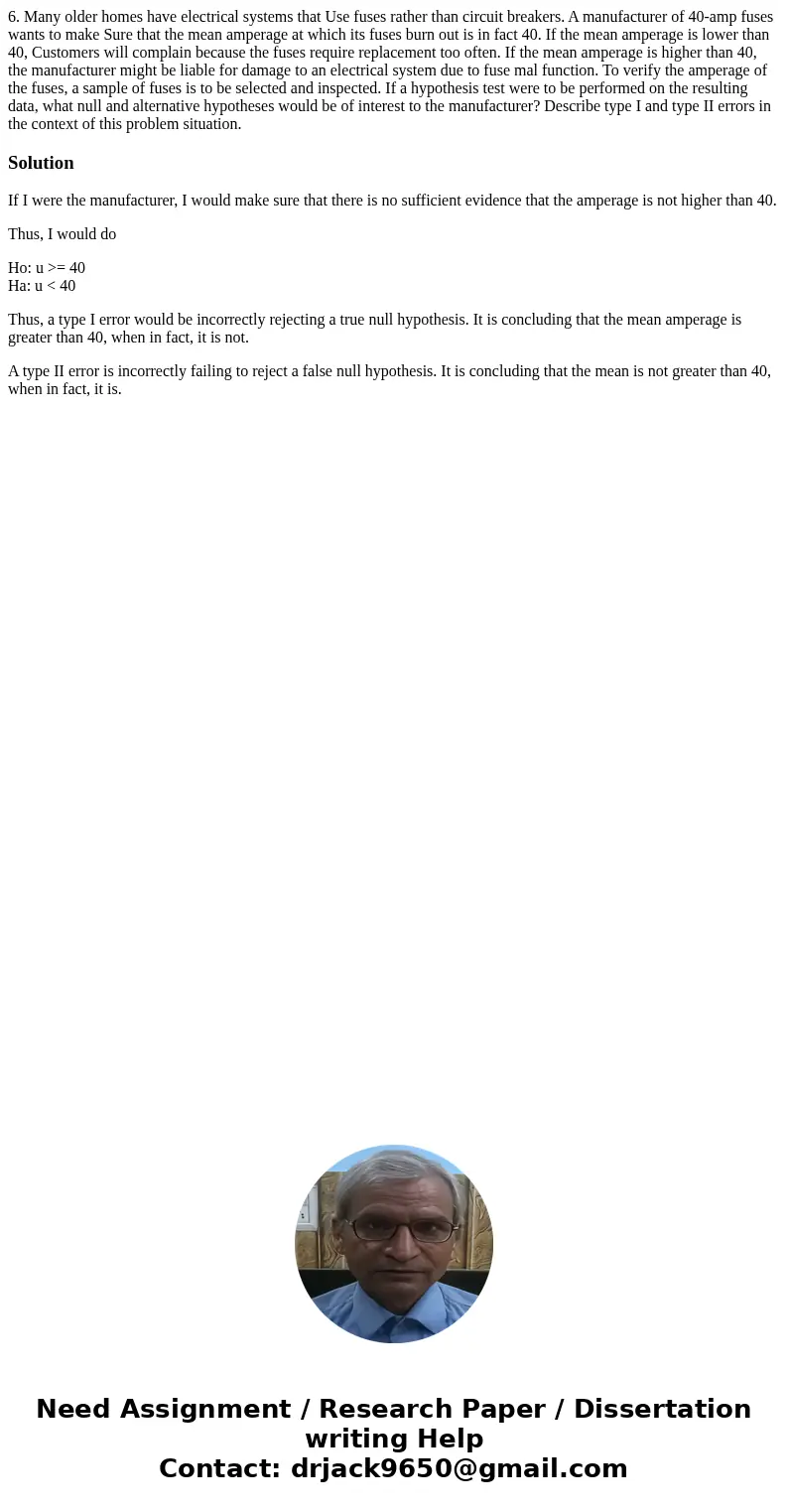6 Many older homes have electrical systems that Use fuses ra
6. Many older homes have electrical systems that Use fuses rather than circuit breakers. A manufacturer of 40-amp fuses wants to make Sure that the mean amperage at which its fuses burn out is in fact 40. If the mean amperage is lower than 40, Customers will complain because the fuses require replacement too often. If the mean amperage is higher than 40, the manufacturer might be liable for damage to an electrical system due to fuse mal function. To verify the amperage of the fuses, a sample of fuses is to be selected and inspected. If a hypothesis test were to be performed on the resulting data, what null and alternative hypotheses would be of interest to the manufacturer? Describe type I and type II errors in the context of this problem situation. 
Solution
If I were the manufacturer, I would make sure that there is no sufficient evidence that the amperage is not higher than 40.
Thus, I would do
Ho: u >= 40
Ha: u < 40
Thus, a type I error would be incorrectly rejecting a true null hypothesis. It is concluding that the mean amperage is greater than 40, when in fact, it is not.
A type II error is incorrectly failing to reject a false null hypothesis. It is concluding that the mean is not greater than 40, when in fact, it is.

 Homework Sourse
Homework Sourse